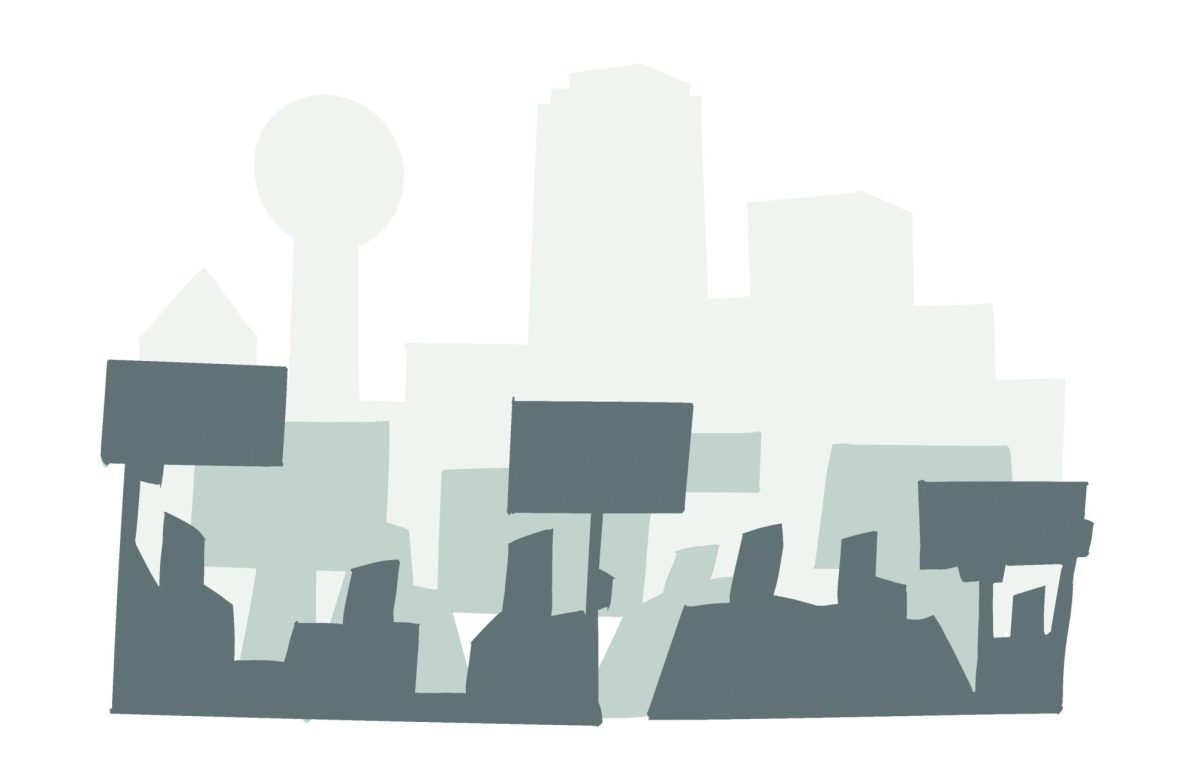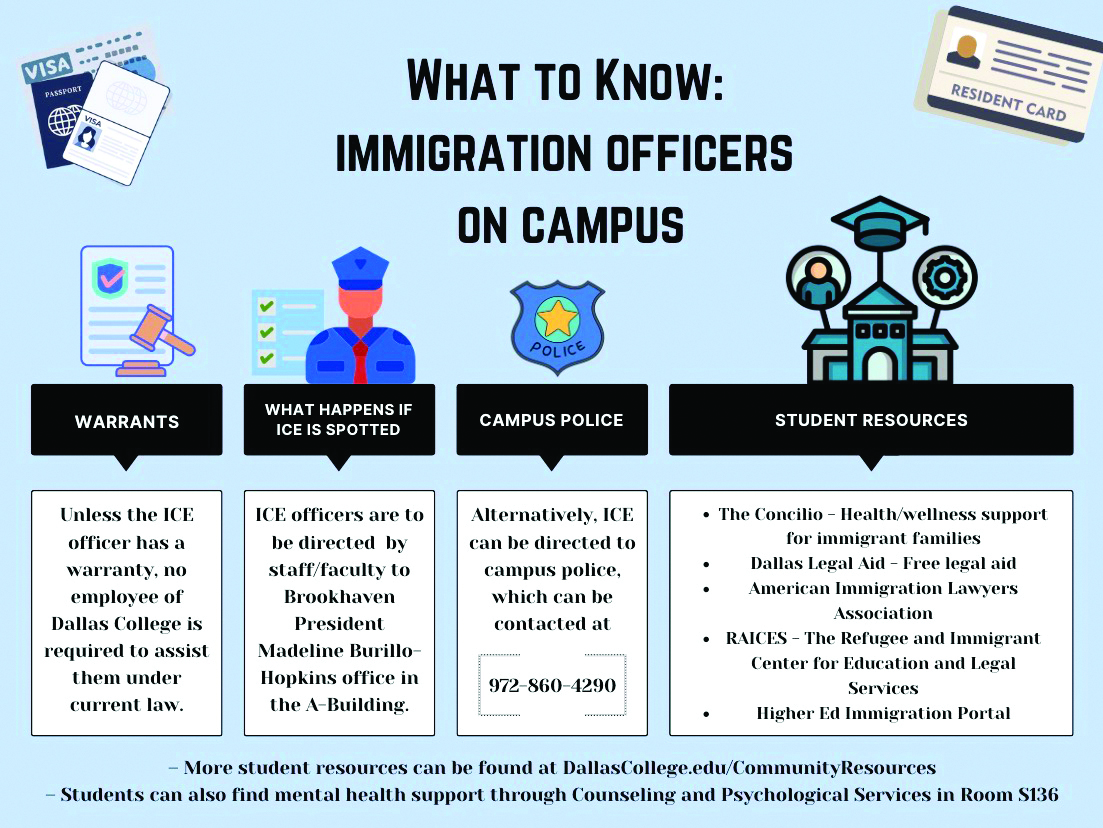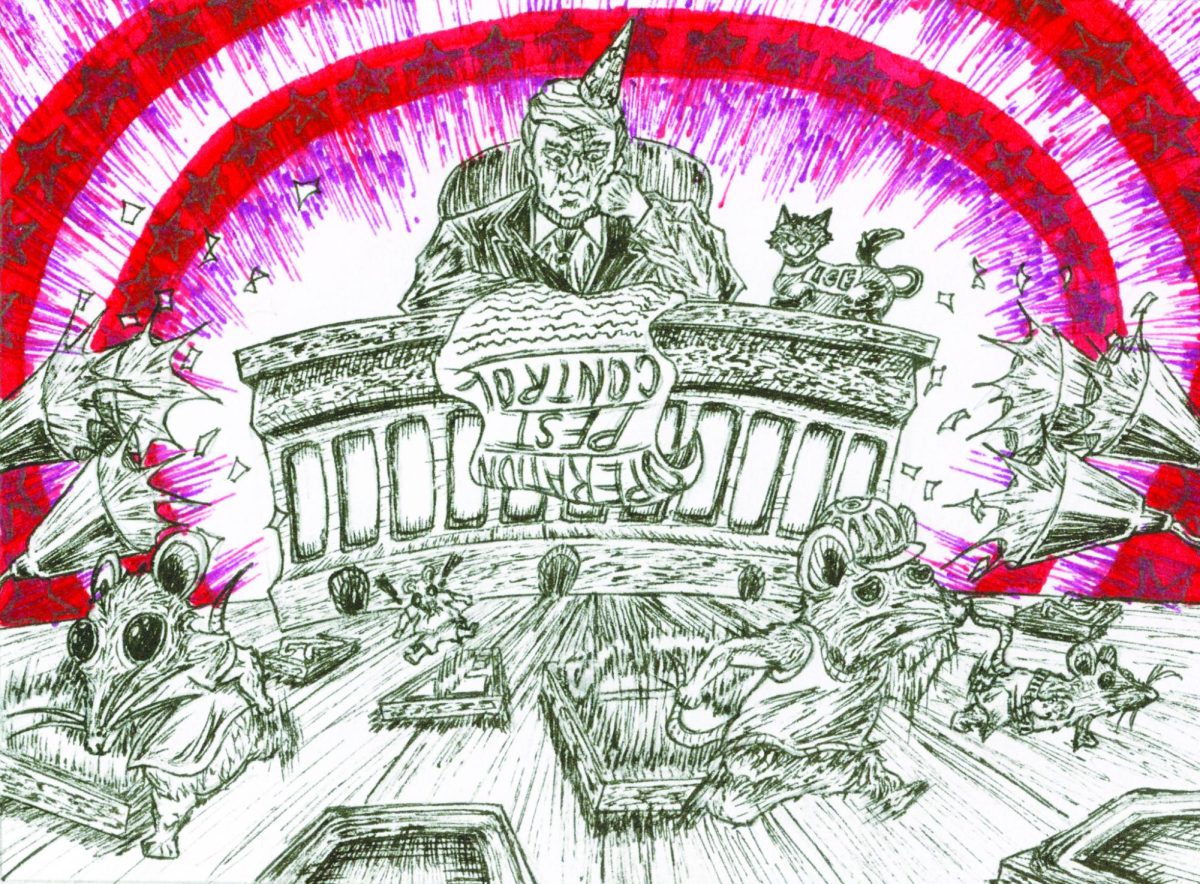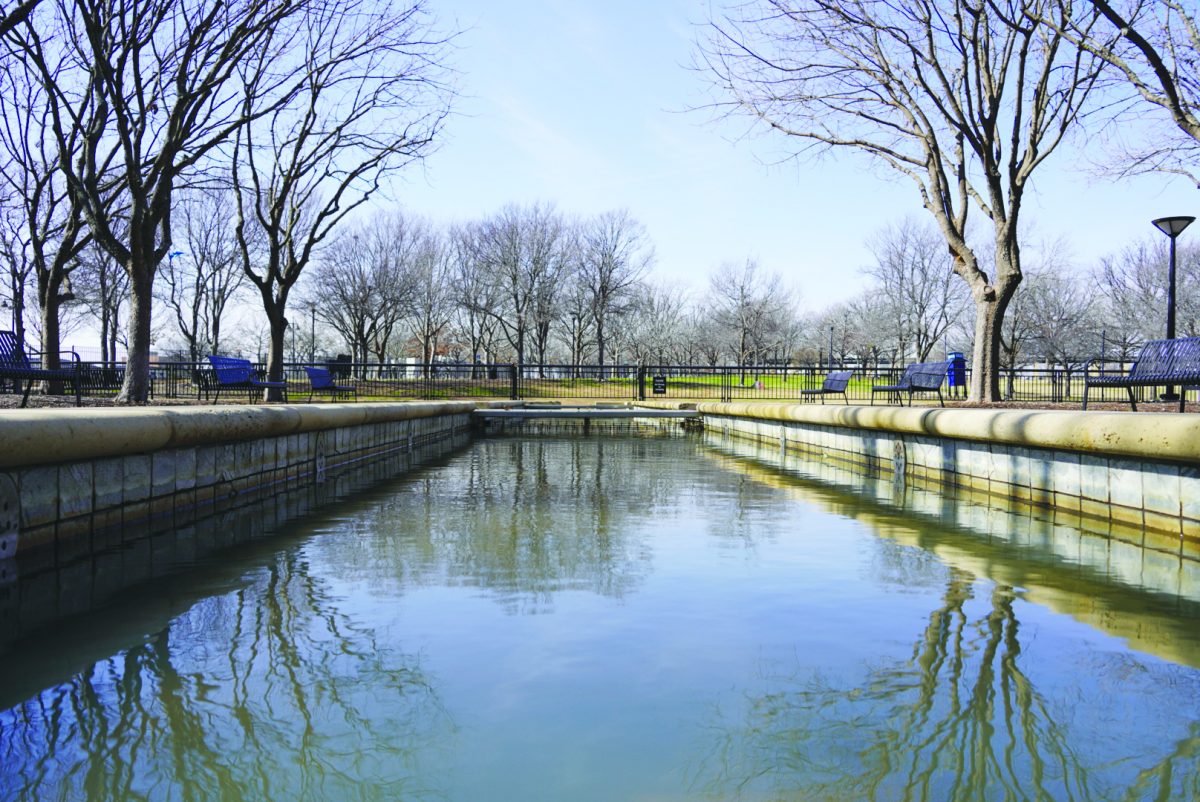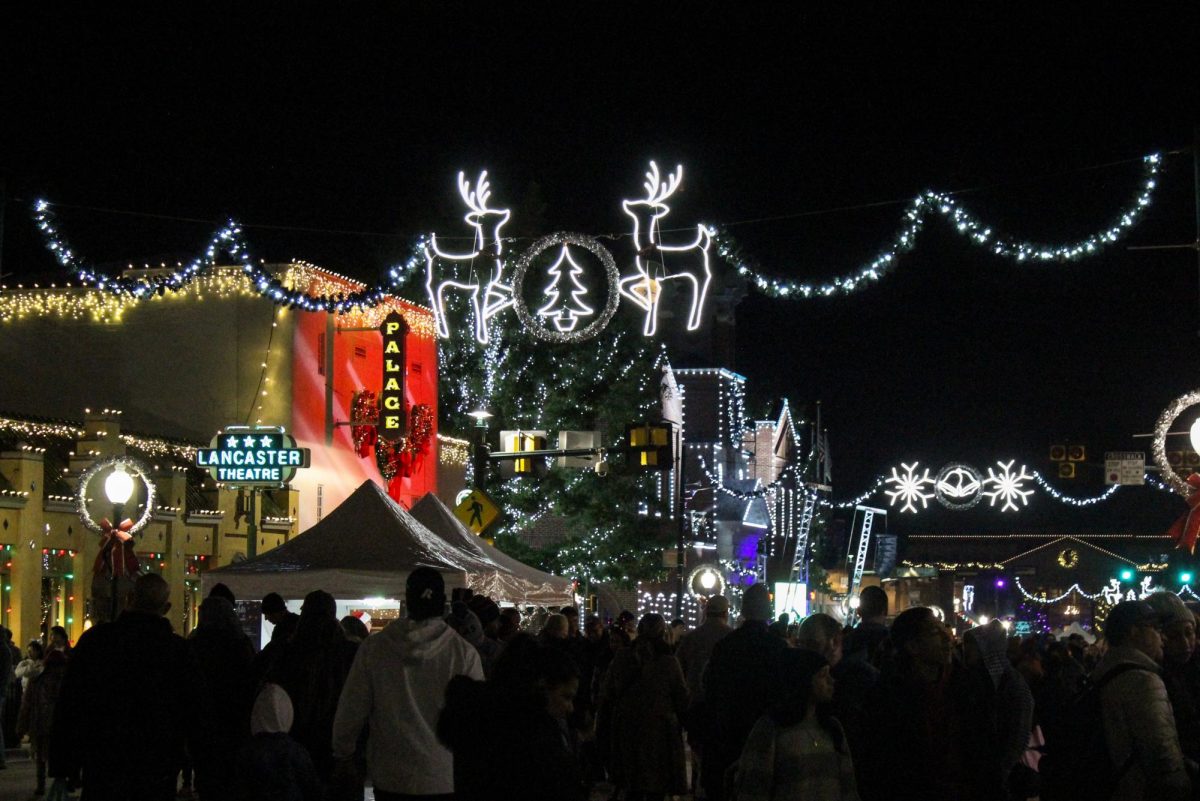By Jubenal Aguilar
Editor-in-Chief
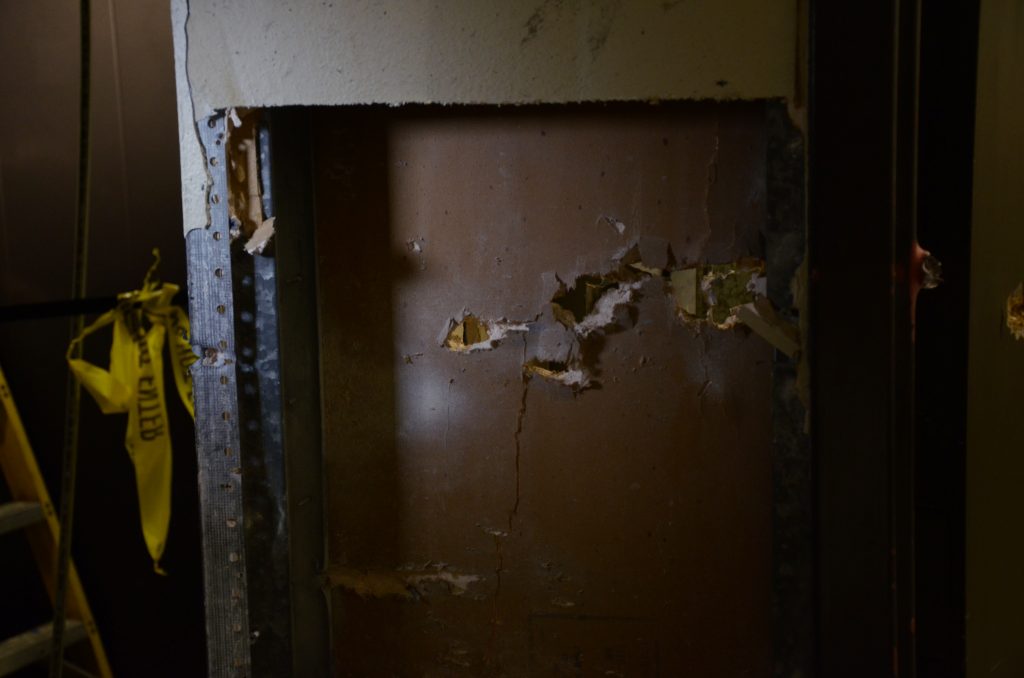
I always felt safe at El Centro College. It was a safe zone in the midst of what I’ve always felt as a chaotic area of downtown Dallas.
El Centro was the first place in my life where I ventured more than a few miles from home on my own. It was exciting to go to school in the middle of the city.
The first day I went to the campus for advising, I was given a quick tour by campus officers. Since then, I always noticed the strong presence of law enforcement inside and around the college.
The worst problems I’d seen was an unruly student or someone who didn’t belong at the college get quickly escorted out.
I knew it was a safe place because of campus police.
GETTING AROUND
I knew El Centro’s hallways like the palm of my hand.
I knew every shortcut, every trick to get to class faster – it was my specialty. I knew every passageway, every door, every stairwell. I knew how to get from one end of the campus to another and avoid all the crowds in between classes.
But there was one spot I didn’t know – the hallway that led to a server room somewhere behind the library on the second floor.
I thought that area was off limits to students, that only staff and faculty could venture there.
When I finally walked into the hallway July 19, 2016, it wasn’t to explore, but to witness, record and report what happened 12 days earlier.
A bomb was detonated in that hallway July 7 to kill a gunman, Micah X. Johnson, who singlehandedly executed the deadliest attack against a law enforcement agency since Sept. 11, 2001.
PRESS TOUR
We received a last-minute email from Ann Hatch, Dallas County Community College District’s director of media relations, inviting all student media to attend the first press walk-through. It would be the first time since the Dallas ambush that anyone outside law enforcement or top El Centro officials would be allowed inside the building.
With less than two hours’ notice, I rushed downtown. I didn’t know who else had answered the call. But I wanted to see what had happened. I needed to see it myself. Not just as a journalist, but as a former student.
I wondered if El Centro was still the safe place I knew.
We attended a press conference. Most local media sent someone to cover the story. Dozens of officers kept an eye on us.
“Until [that] night, El Centro was one of the safest places downtown,” Jose Adames, El Centro president, said later that day.
We were escorted and taken to key locations of the night of the shooting. The impact craters from bullets on the cement stairs are still visible today.
A WAR ZONE
But the hallway, or what was left of it, wasn’t a hallway anymore. It wasn’t a part of the college campus I knew so well.
It was the aftermath of a war zone.
The end of the hallway was dark. Only a few lights shone in the area.
We didn’t see the whole picture that day, only what they allowed us to see. The rest, we were told, investigators took for further examination.
The aftermath of hundreds of bullets exchanged between Dallas SWAT and the gunman, were still visible.
The ceiling was exposed with only a tile here and there still intact. Only a few lights were still in place. Dozens of wires dangled across the frame that once concealed them from the public.
Plaster board was in pieces everywhere. Some of it piled up high after FBI investigators left what they must have deemed unnecessary. Entire sections of the walls were missing after they were cut and taken for further inspection.
The exposed sections allowed us to see inside the walls where metal was twisted, torn and punctured by the gunfight.
The rest of the campus was in desolate, apparently untouched.
NOT SAFE
El Centro was no longer safe, or it didn’t feel that way to me anymore. How would students return to classes knowing what happened only weeks earlier? How would they be reassured that someone else wouldn’t force themselves into the college again?
It wasn’t El Centro police officers’ fault the gunman took refuge in their campus. It wasn’t anyone’s fault. It was by chance that it happened.
The gunman could have gone anywhere, but the quick actions of Dallas, Dallas Area Rapid Transit and El Centro police shaped the outcome of events that followed the initial shooting. By luck, or by fate, the gunman cornered himself in a place that wasn’t filled with students.
He cornered himself into a place where the bomb explosion didn’t cause irreparable damage or closure of El Centro for a longer period of time.
HARSH REALITY
The days of being safe are behind us. Not just on a college campus, but anywhere. Police officers do their jobs to make us feel safe. But there is only so much they can do.
The reality is that we live in a difficult time.
Our laws lack the proper protections to keep guns and other high-power weapons out of the hands of those that shouldn’t have them.
Since the Feb. 14 shooting at Marjory Stoneman Douglas High School in Parkland, Florida, that left 17 dead, incidents of students taking guns to schools across the country have been reported nearly every day.
DCCCD IS SAFE
But the truth is that we, as DCCCD students, staff and faculty, are safe at any district facility. Our police officers are always on the lookout for suspicious activity and react quickly.
A high school student at El Centro was arrested after it was confirmed he concealed a weapon and magazine on campus Feb. 22. Police reacted with efficiency to prevent possible tragedy from taking place.
On Nov. 29, 2016, Brookhaven went on lockdown after a caller reported an intruder in J Building. On April 26, 2016, campus police locked down the campus after hearing what they believed to be gunfire near the campus. The sound was later confirmed to be construction work nearby.
We may feel unsafe sometimes, but our police force is among the best trained in the area. They are not security, they are real cops like the ones that stopped the gunman July 7, 2016.
DCCCD police officers are the real day-to-day heroes who put their lives on the line to keep us safe.
In a Feb. 16 districtwide email, Lauretta Hill, DCCCD chief of police, said her department is working with the FBI, Department of Homeland Security and Department of Justice to enhance virtual training opportunities for DCCCD police officers to prepare for an active shooter.

